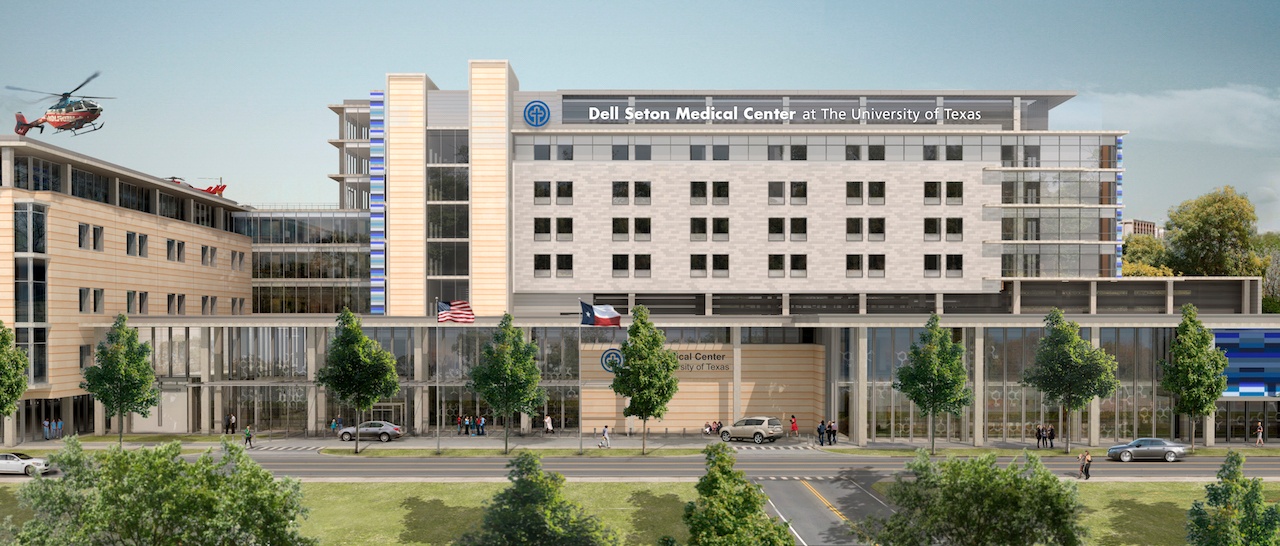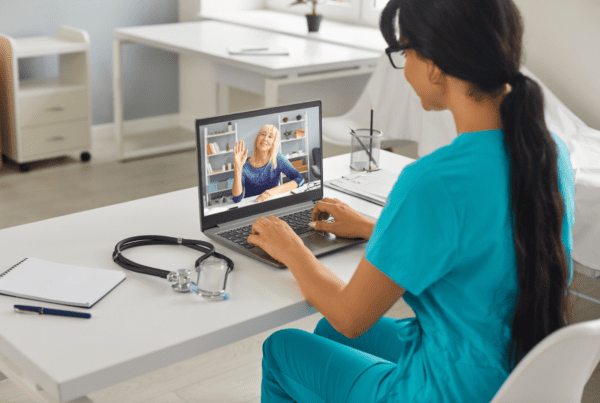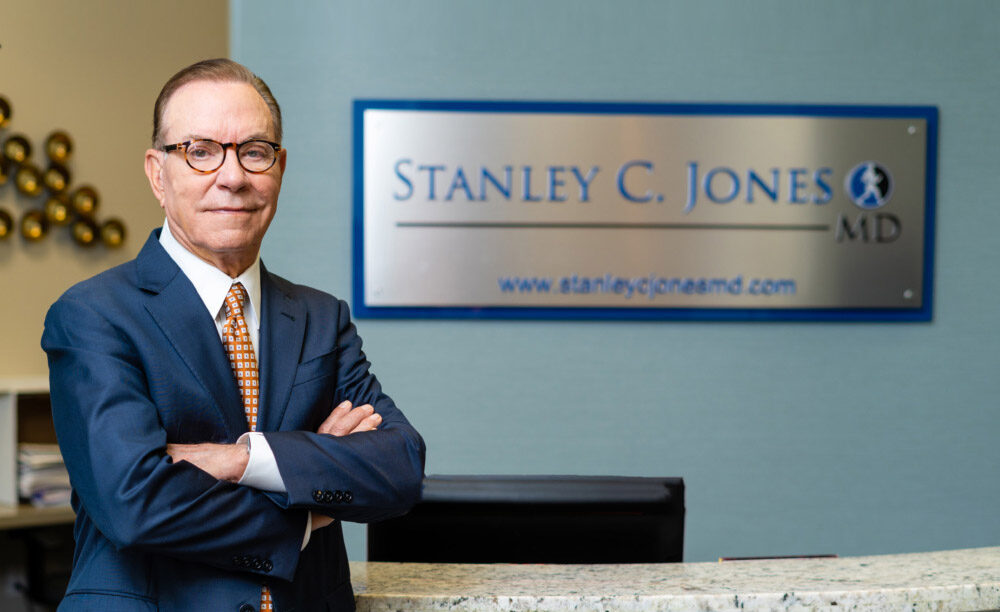The Seton Healthcare Family is a faith-based, nonprofit healthcare system, and it’s a member of Ascension, the largest Catholic and nonprofit health system in the nation. From 2005 to 2014, the Seton Healthcare Family provided $2.9 billion in charity care, all while continuing to conduct groundbreaking clinical research. With monumental moments on the horizon, the Seton Healthcare Family continually strives to expand access to high-quality, low-cost, person-centered care through programs like the Community Care Collaborative. Noting their accomplishments and dedication, Texas MD Monthly spoke with President Christann M. Vasquez on Seton’s future goals.
TxMD: What is your background in healthcare and what brought you to Austin?
President Christann M. Vasquez: I moved from San Antonio, where I was working as executive vice president and chief operating officer for San Antonio’s University Health System. One of my roles involved helping plan and build a new teaching hospital in San Antonio. I love change, academics and being a part of training the next generation of providers.
I loved my job in San Antonio, but joining Seton was a tremendous opportunity for me to be part of something that I am passionate about. I lost both of my parents to chronic diseases. My dad died at 42-years-old, and my mom was 53-years-old when she passed away from diabetes complications. The type of programs Seton is creating would have helped people like my parents. We’re not only building a new teaching hospital that will bring new treatments and cures, we’re meeting people where they live, helping them establish medical homes, and providing the care and education they need to stay healthy and out of the hospital.

TxMD: Although Seton is a major provider of healthcare in Central Texas, I imagine very few of us know about your history. Can you tell us how Seton came about and some of the major milestones along the way?
President Christann M. Vasquez: Seton Healthcare Family was founded by the Daughters of Charity of St. Vincent de Paul, a Catholic community of women dedicated to the sick and the poor. Seton is named for Elizabeth Ann Seton, the first American-born Catholic saint.
Back in 1902, a group of Austin citizens asked the Daughters to build a hospital. With help from $5,000 in donations, the 40-bed Seton Infirmary was built. The Seton Infirmary eventually led to the construction of Seton Medical Center in 1975.
One of the other reasons I came to Seton is for its history as a trailblazer. For example, we offered the region’s very first neonatal intensive care unit. But even though we keep oureyes on the future, we always stay true to our founding mission.
“The type of programs Seton is creating would have helped people like my parents”
TxMD: Seton is in the middle of a fundraising campaign to replace University Medical Center Brackenridge with a new teaching hospital, Dell Seton Medical Center at The University of Texas. What services will this new facility provide?
President Christann M. Vasquez: University Medical Center Brackenridge has served this community incredibly well, but it lacks modern infrastructure to take us into the future. We are building Dell Seton Medical Center at UT just across 15th Street, on the same campus as the University of Texas at Austin’s Dell Medical School. Construction is in full swing on the new hospital, which will replace services from UMC Brackenridge and is scheduled to open in 2017.
Seton’s new teaching hospital is where all the brain power and clinical discoveries will come together to save lives, regardless of where you live in Central Texas. It will be the new home for the region’s only adult Level 1 Trauma Center and have more capacity for critical care patients and our growing neurosciences program, including epilepsy care. And of course, it will serve as the primary training site for Dell Medical School.
TxMD: Why is it so important for Central Texas to have this new healthcare and education facility?
President Christann M. Vasquez: Austin is the largest city in America with a Tier One research university, but without a medical school or a modern academic medical center. We need the medical school and new teaching hospital if we want to truly elevate the level of care that we can provide to the community. If Austin wants to be a world-class city, we need a world-class healthcare system. Central Texas is growing like gangbusters. We are fortunate to already have a high-quality group of physicians practicing here. Now we need to grow and support that level of care and secure our future.
“Austin will become a healthier community when we provide the right care, at the right time, in the right place”
TxMD: What will the relationship be like between Seton’s teaching hospital and UT’s medical school?
President Christann M. Vasquez: What is most exciting about this new relationship is that both organizations, Seton and Dell Medical School, see a unique opportunity to fundamentally change the way healthcare is delivered, making it more patient-friendly and cost-effective. This is possible because of the community support, and mandate, we have to make that sort of change. We are committing to working together to elevate medical education in Central Texas. For example, the new hospital will be equipped with technology that allows students in classrooms across the street at the medical school to observe a procedure taking place at our hospital. Students will be able to ask questions to the surgeons performing the procedure in real time.
The impact of the partnership is far-reaching. In addition to working in Seton hospitals, students and faculty will also do rotations in community clinics around the city, as well as in a number of private physician practices.

TxMD: Are there any ways in which this UT-Seton partnership is unique?
President Christann M. Vasquez: Absolutely. But this is really a three-way partnership. It’s a true public-private partnership, and it’s so unique, between Seton, The University of Texas and Central Health, Travis County’s healthcare district. We are working closely with Central Health to improve access to medical homes, such as an outpatient clinic or a primary care physician’s office. The goal is for patients, especially those withchronic conditions, to easily access preventive care and avoid a hospital stay in the first place.
This is not simply about bricks and mortar. What motivated me to leave a job that I loved in San Antonio and move to Austin is that we are building a new care model for a healthier community. In fact, the inaugural dean of the medical school, Dr. Clay Johnston, has said we will only be successful when we can say Austin is one of the healthiest cities in the U.S. You’ll hear me say this again and again: Austin will become a healthier community when we provide the right care, at the right time, in the right place.
TxMD: How will the new teaching hospital impact families and individuals in Central Texas?
President Christann M. Vasquez: Patients will have more treatment options available right here in Central Texas.
Families can stay close to home for certain specialized care or clinical trials, instead of traveling to Dallas or Houston.
Another positive change is that patients and their families will be engaged in their care more than ever before, they’ll be truly involved in learning about their conditions, prevention and treatment. This is part of what Seton calls Humancare; it’s how we serve you with our hands and our hearts. Another part is addressing those things that most affect a patient’s experience.
For example, we know that patients and family members experience a lot of anxiety between the time that they are told that they might have a serious medical problem and when they are given the actual diagnosis. So we are looking at how we can expedite timely test results for a better patient experience.
“We are developing a best practice model for expanding access to high quality, financially sustainable healthcare and creating a healthier community”
TxMD: What role is philanthropy playing in building the new teaching hospital?
President Christann M. Vasquez: A key role. When the Daughters of Charity came to Austin to build Seton’s first
hospital, they asked the community to show its support. We are again asking Seton and its parent organization, Ascension, the U.S.’s largest nonprofit healthcare system, are investing $245 million to build this $295 million modern new teaching hospital, and is asking the community to help us raise the remaining $50 million.
Seton is receiving amazing support for this project. The Michael & Susan Dell Foundation, for example, recently announced a $25 million challenge grant to help build it. This generous grant will double every donation, whether it’s $10 or $10,000, up to $25 million. So, it’s a great opportunity to double the impact of your donation.
TxMD: Do you think this partnership will have an impact beyond Central Texas?
President Christann M. Vasquez: Yes. I fully expect that healthcare experts from around the country will come visit us in Austin to see first-hand how we have transformed the delivery of healthcare and built a new medical district from the ground up. We are developing a best practice model for expanding access to high quality, financially sustainable healthcare and creating a healthier community. There is no better place than Austin, Texas, to make this happen.
To find out how you can help Austin lead the future of care and bring new technologies, treatments, and cures closer to home, contact the Seton Fund campaign office at 512.324.7990 or visit futureofcare.supportseton.org.
For more information visit www.seton.net.







Recent Comments